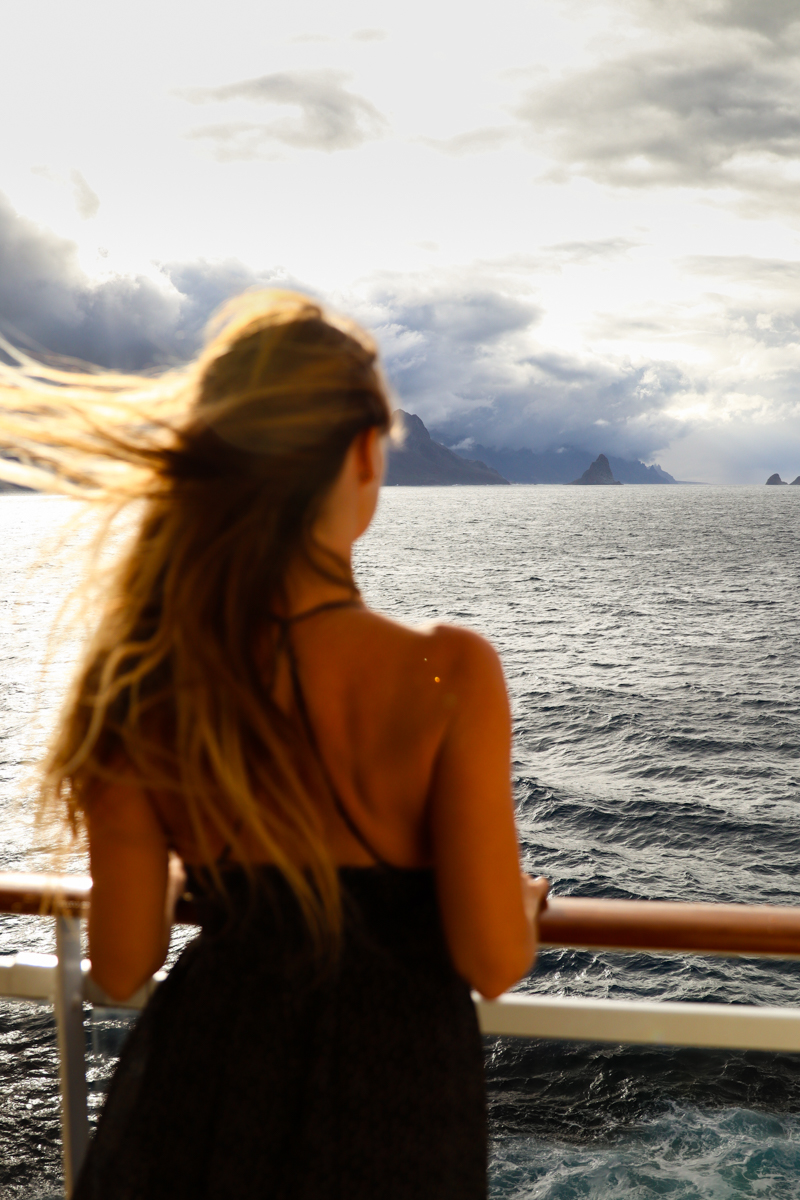tenerife, canary islands
- AdminB
- Mar 6, 2020
- 3 min read
Updated: Jan 21, 2023

A grey haze hangs ominously amongst the jagged rock formations as if to guard the island as we approach. Expecting ghost pirate ships to come into view, we instead find a vibrant city nestled between the stadium-like mountains trickling downward to the sea. The bustling city is still sleeping when we arrive. Tenerife is the largest and most populated island of the eight Canary Islands. Our adventure begins with a ride to the center of the island through bird filled pine forests stretching far above our heads, small scenic hillside towns and hairpin curves on steep mountain sides. The stunning drive stops at Teide National Park Volcano and crater. It is a UNESCO World Heritage Site , the highest elevation in the islands of the Atlantic Ocean and the third-largest volcano in the world from its base. We have a brilliant guide who tells us about the island’s trade history, microclimate and various similarities to the Hawaiian island chain. Strangely we feel at home and get the first exercise we’ve had since battling flu like symptoms on the boat.
We wander for several hours through colossal rock formations standing like lone figures inside miles of flat alien landscape. The strange moon like surface is dotted with odd shaped craters, old volcanoes and rivers of petrified lava. All these lead up to the impressive silhouette of Tiede Volcano standing at 3,718 meters high. The entire National Park is a unique geological treasure housing various plant and animal species, all thriving in the multi-colored mineral chaos. Before the 1496 Spanish colonization of Tenerife, the native Guanches referred to a powerful figure living in the volcano, which carries light, power and the sun. El Pico del Teide is the modern Spanish name.
Teide was a sacred mountain for the aboriginal Guanches, so it was considered a mythological mountain, as Mount Olympus was to the ancient Greeks. According to legend, Guayota (the devil) kidnapped Magec (the god of light and the sun) and imprisoned him inside the volcano, plunging the world into darkness. The Guanches asked their supreme god Achamánfor clemency, so Achamán fought Guayota, freed Magec from the bowels of the mountain, and plugged the crater with Guayota. It is said that since then, Guayota has remained locked inside Teide. When going on to Teide during an eruption, it was customary for the Guanches to light bonfires to scare Guayota. Guayota is often represented as a black dog, accompanied by his host of demons (Tibicenas).
The miles of twisting paths has us hungry by the end. Making our way back to the city we pull into a small cafe on the roadside that seems built into the rocks. We sit beneath the magenta beauganvilla covered trellis on the brick patio and make a quick meal of the te frio con limón and papas fritas. Only a short while into our travels along the curvy roads after leaving the restaurant we witness a car hitting a motorcyclist. The rider went flying into the rocks along the side of the road. Our guide was a fast responder along with several medical personnel we had in our group. The man had a concussion but an ambulance was on the way. The rest of the ride back was less eventful. The sloping roads seemed to end in the sea and dusk fell as we made it back to Santa cruz. We say farewell to a small piece of home that we happened upon on the other side of the world. The sun sets and we set sail to our next stop; Madeira.
Photos // Keith Ketchum















































































Commenti